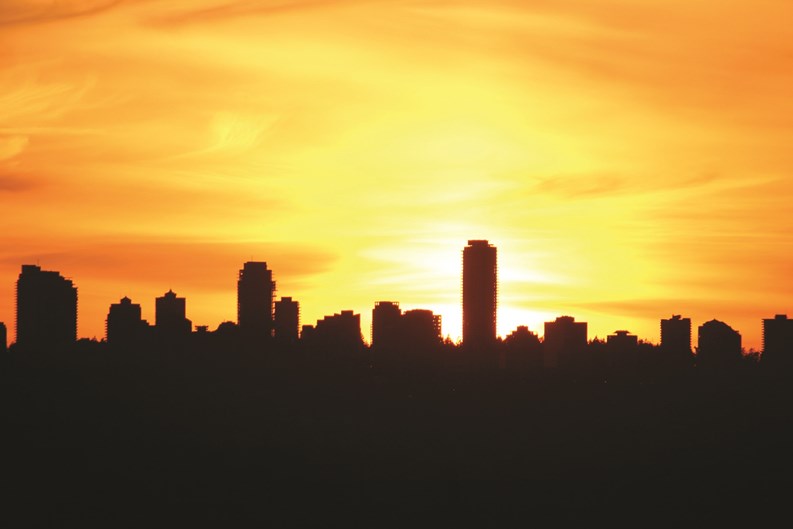Real estate brokers and developers have seen sales of condos and co-ops on Central Park North and in Harlem take off in the past year. On Christmas Eve of 1999, Saadia Lynch, a broker with Bellmarc Realty, a residential real estate brokerage firm in Manhattan, was asked to sell a two-bedroom, one-and-a-half bathroom beauty at 1800 Adam Clayton Powell, Jr. Boulevard, in a pre-war building overlooking Central Park. The apartment sold for $305,000. A year later, Lynch is selling another apartment in the same line for $100,000 more. This supply of desirable properties, mingled with an expansive market, is turning Central Park North and Harlem into one of Manhattan’s biggest boomtowns; one where it is still possible for average New Yorkers to live in relatively large, attractive homes.
A combination of beautiful houses, apartments, a wonderfully convenient transportation system and a rich history makes the upper reaches of Manhattan both affordable and increasingly desirable. "People are coming from downtown to Central Park North," says Lynch.
1800 Adam Clayton Powell Jr. Boulevard is just one of the buildings that Lynch has discovered since she began selling apartments in Harlem. This 36-unit condominium sits on the corner of Central Park North and West. Lynch recently sold a 1,358-square-foot, three-bedroom apartment with full park views for $495,000 in the same building. "On Central Park West," she muses, "that apartment would cost at least $800,000."
Another condominium in which Lynch has had a number of sales is 137 Central Park North, also known as The Semiramis. Built in 1901 by the architect Henry Anderson, the 35-unit Semiramis is named for a beautiful Assyrian queen who was said to be the inspiration for the building of Babylon. The exquisite features of these buildings and others throughout Harlem reflect the affluent and textured history of the area.
"This is one of the last places where you can still get a large apartment for $300,000 to $400,000," says Steven R. Wagner, a co-op attorney with Wagner, Davis & Gold, P.C., in Manhattan, who is investing in the area. "Some of the buildings are just flat-out gorgeous, designed by the most important architects in the history of New York City."
A "Gateway" to Harlem
Central Park North forms a "gateway" to the rest of Harlem and runs along the north end of Central Park from Fifth Avenue to Frederick Douglass Boulevard, which is the continuation of Central Park West/Eighth Avenue. Frederick Law Olmsted, the landscape architect who designed Central Park in 1858, "created circles at each corner of the park," says John Reddick, director of government and community relations at the Cityscape Institute, an urban design resource for public space improvement. A memorial to Frederick Douglass, one of the foremost leaders of the Abolitionist Movement, creates the boundary of Central Park North on the northwest corner of Central Park, while Milbank Frawley Circle forms the eastern boundary of the street at the northeastern corner of the park.
Central Park North is still called 110th Street to the east and west of the park. The blocks bordering the park came to be called Central Park North due to a movement spearheaded by one of its residents, Bettijean Miller. "Why should Central Park South be Central Park South and this be 110th Street?" she questions. Miller is president of the Harlem Gateway Committee, an organization that works for beautification of the block, including renovations of the subway station at Frederick Douglas Boulevard, eradicating graffiti, fighting drug activity and planting flowers and trees on the block.
The residents of Central Park North have immediate access to the delights of the northernmost portion of the park. The Dana Discovery Center, an environmental learning facility built in 1993, hosts a variety of nature-related programs just inside the park’s northern border. Visitors can fish or boat on the Harlem Meer, a small lake flanking the Discovery Center.
Ice skating is available during the winter, and swimming during the summer at the Lasker Rink and Pool, located on the mouth of the stream leading into the Harlem Meer. The Conservatory Gardens, an exquisite series of formal flora and fauna, is a short walk away from Central Park North. A quick stroll westward brings residents to the Morningside Heights area, home to the Cathedral of St. John the Divine, Columbia University, St. Luke’s Hospital and many restaurants and services.
Central Park North residents also enjoy what may be the best access to public transportation in the city. The number 2, 3 and 4 busses all run along Central Park North, and four separate subway lines (2, 3, B and C) have stations at the street. Commute times to midtown are surprisingly short: traveling from Central Park North to 42nd Street takes only 20 minutes by subway, for example.
Harlem’s History
Harlem, originally named Nieuw Haarlem in 1658 by Dutch settlers, was farmland until the mid 19th Century. During the 1800s, the area was home to the affluent, who built rich farms and estates, and to poor immigrants and squatters. The New York and Harlem Railroad began service from lower Manhattan during the 1830s and later in the century elevated railroads were built along Second, Third, Eighth and Ninth Avenues, promoting a shift of population into Harlem. During the first part of the 20th Century, wealthy Jews and African Americans began moving into the area, which had an abundance of housing stock and services. The 1920s brought the famous Harlem Renaissance and a flowering of local culture and arts, but the Great Depression was a blow from which the area never completely recovered. Housing became tighter, the quality of housing stock declined and overcrowding became rampant as conditions forced residents to crowd ever greater numbers of individuals into ever smaller quarters. Today, the shortage of housing stock in Manhattan, Harlem’s natural advantages and the romance of the area are wooing a new group of residents to Harlem, and helping spur a new renaissance in the blocks north of Central Park. According to the New York City Police Department, crime has fallen as much as 50 percent in the past six years in some parts of Harlem. The area is experiencing a revival similar to that of New York in general.
Housing Stock and New Development
Recently, a co-op at 186-188 West 135th Street with a formal dining room, parlor, two bedrooms, one-and-a-half bathrooms, a walk-in linen closet, cedar pantry and a maid’s room sold for $225,000 about the price of an average studio downtown.
A current listing for a two-bedroom condominium on West 131st Street is priced at $225,000, with a monthly common charge of $300. Buyers and brokers should be aware that there are very few co-ops and condos in the neighborhood. Instead, 95 percent of the housing stock is brownstones, a reminder of affluent earlier years.
The nearby neighborhoods of Striver’s Row, the Mount Morris Park Historic District, Hamilton Heights, Sugar Hill and Convent Avenue feature some of the finest brownstones in the city. A five-story Romanesque Revival brownstone built in 1857 with four fireplaces, a front façade, original moldings and hardwood floors is being listed for $585,000; certainly a departure from the prices of lower Manhattan.
Both the city and private developers are changing the footprints of the housing by building or renovating existing properties into co-ops and condos. One- to three-bedroom units are being created in empty buildings on West 117th and West 118th Streets along Morningside Avenue. Called Morningside Park, the development is subsidized by the city and state under the Partnership of New Homes Programs. The 49 condominium units have all been sold.
On West 116th Street and Lenox Avenue, a 241-unit city-subsidized co-op called Renaissance Plaza, is in the final phases of construction. Two upscale restaurants are being planned by a Downtown restaurateur.
In other development, a private developer is creating condominiums in the renovation of an 1892 building at 257 West 117th Street. Work is being done by Mastercraft Builders, a Manhattan developer. The project "will look like a Park Avenue building," says Jeffrey Levitt, director of operations for Mastercraft. The building will house a charter school, the John A. Reisenbach School, on its first three floors. A separate entrance will lead to the upper condominiums, which will range in size from 2,000 to 2,600 square feet and will be sold for about $300,000 each.
"We wanted to create large apartments," explains Levitt, "because we know that people want space." The developers expect that their customers will move from Downtown and will expect upscale amenities such as the Kohler fixtures, GE appliances, cherrywood floors and concierge services they are providing.
"While it is pioneer territory," says Levitt, "the price for the space is an absolute bargain. A condominium in Chelsea with the same fixtures would be more than double."
Shopping the Area
A recent addition for shoppers is the development of Harlem USA, a beautiful $66.2 million retail and entertainment complex located at the corner of 125th Street and Frederick Douglass Boulevard. Harlem USA was co-developed by The Gotham Organization and Grid Properties and features national chain stores such as Disney, Old Navy, HMV Records, Modell’s Sporting Goods, New York Sports Clubs and a full-service Chase Manhattan Bank. A nine-screen Magic Johnson Theaters multiplex helps anchor the complex. A Starbucks has recently opened a few blocks away on 125th Street.
Grocery shopping in the Central Park North area can be accomplished at C-Town or Associated Market. For major shopping, perhaps the best market in New York–the uptown Fairway fresh food store–is located in Harlem on 125th Street and Twelfth Avenue, attracting shoppers from all over Manhattan and New Jersey via the George Washington Bridge.
The new construction activity, the thousands of weekly shoppers at Harlem USA and Fairway, and the rising tide of new neighborhood residents all bode well for Central Park North and the Harlem neighborhoods it gives access to. Some 80 years after the Harlem Renaissance, the neighborhood is finally recapturing some of the energy and promise of its early years.
Mr. Binder is a principal at Bellmarc Realty, a residential real estate brokerage firm in Manhattan.





Comments
Leave a Comment